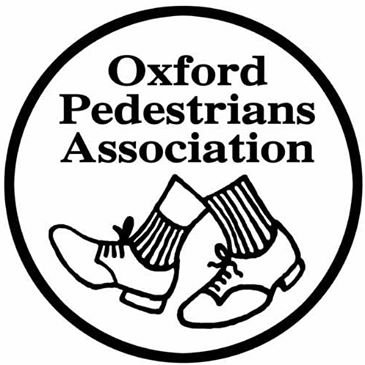Lockdown for Pedestrians
Attendees: Sushila Dhall (Chair), Keith Frayn, Don O’Neal, Peter Headicar, Susanna Pressel, Ruth Davis, Chris Cowley (Secretary)
The meeting discussed life on the streets during Lockdown and what OxPA should be doing to influence change as the Lockdown is eased.
Sushila confirmed that OxPA had not been approached by the County Council to make recommendations about how to move forward. Councillors are considering what changes to make but there is uncertainty about what budget is available. Councils in other cities have already started to take action so it is disappointing that Oxford is lagging behind.
The overwhelming view of the meeting was that, during Lockdown, the improved air quality and quiet streets had been a delight. Walking around the city had been a pleasure, with roads easy to cross and families out together on bicycles. The Lockdown had highlighted the poor air quality, noise and smell from traffic which pedestrians have become used to enduring. It had also highlighted that pedestrians are literally ‘marginalised’ to the worst part of the highway: squeezed onto narrow pavements (Hythe Bridge Street being a particularly bad example and the recent changes to the George Street junction had made things worse for pedestrians).
In consequence, and to enable social distancing on pavements, the meeting suggested pushing for the following changes:
- No pavement parking
- Removal of obstructions on pavements, such as wheelie bins, parked bicycles, A-frames
- Cutting back of vegetation which obstructs pavements
- Measures to ban antisocial cycling on pavements
- Review of timing of pedestrian crossings to make them more responsive
- Putting pedestrians at the heart of any new traffic schemes. The proposed Botley Road scheme does nothing for pedestrians despite rhetoric to the contrary
- A possible celebration of the car-free experience once a year
It was felt that there was an appetite for a symbolic project at this time: the pedestrianisation of Broad Street and expansion of space for pedestrians and cyclists on St Giles would be perfect candidates which could be trialled on a temporary basis easily and cheaply.
As more people returned to the city centre, pavement crowding would make social distancing problematic, particularly in Magdalen Street and St Aldates where space is shared between moving pedestrians and people queuing for buses. The meeting wished to seek clarity about who would be responsible for monitoring bus queues in these locations and enforcing social distancing. Would it be possible to move the bus queues into part of the carriageway to allow moving pedestrians to pass at 2m distance?
Councillors are currently working on plans for traffic-free zones around schools (both state and private) but no detailed plans are currently available. Children will need plenty of space for social distancing once schools open again.
The meeting expressed regret that the proposed Zero Emissions Zone project for the city centre area was being delayed. The delay was to allow time for businesses to make arrangements for the changes required due to the coronavirus pandemic. Furthermore, the proposed Connecting Oxford scheme has also been delayed. Misgivings were expressed about both of these schemes and a number of details have yet to be clarified (for example, arrangements for journey across the city). However, the Connecting Oxford scheme had received a 60% approval rate which is very encouraging.
The coronavirus pandemic has shown that things can change quickly if a threat to health is perceived. Seven million people have already died as a result of air pollution which is far more than the death toll for the virus. Government policy is also committed to reducing carbon emissions and to encouraging more physical activity.
At the end of the meeting, it was confirmed that the notes from the meeting would be circulated to the membership, along with OxPA’s response to LCTP5 and Sushila’s submission to the consultation on Walton Street.
